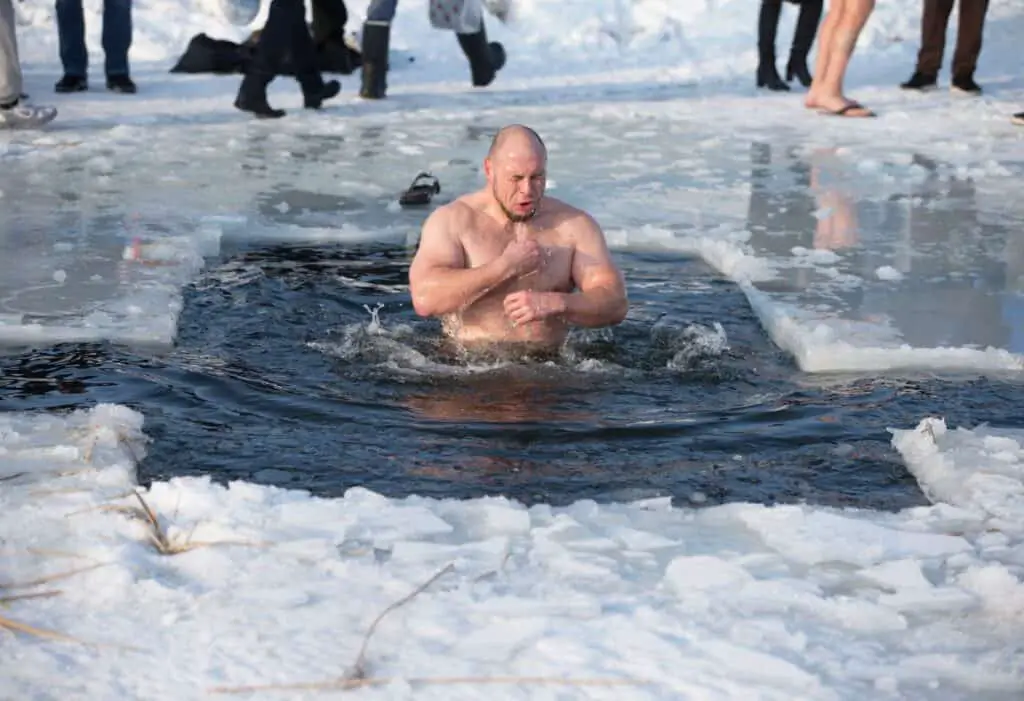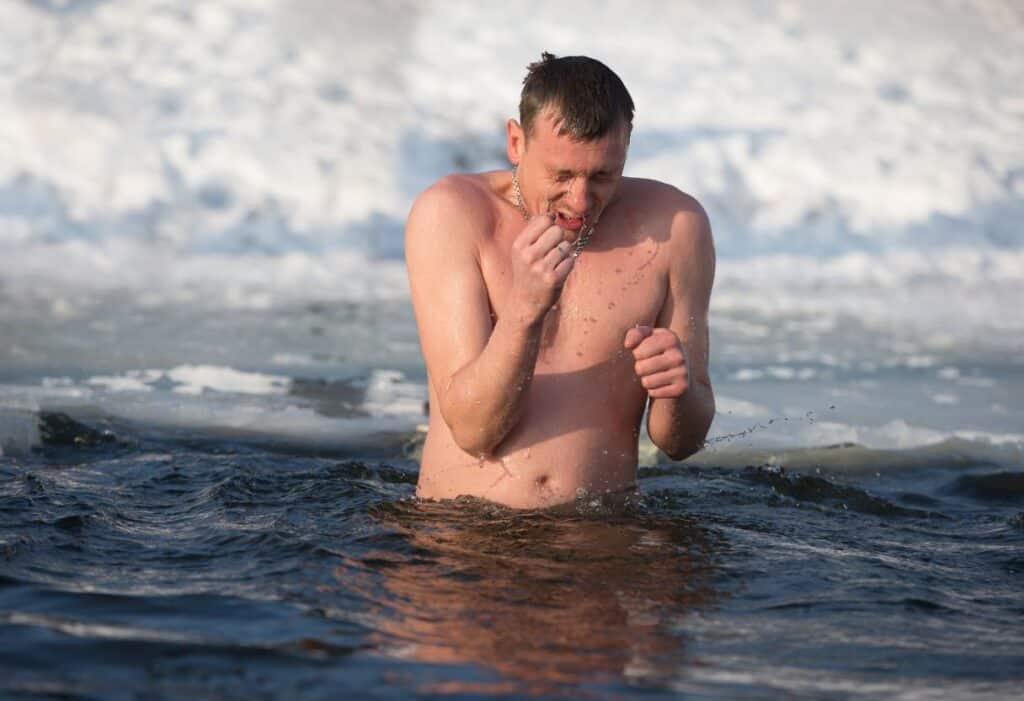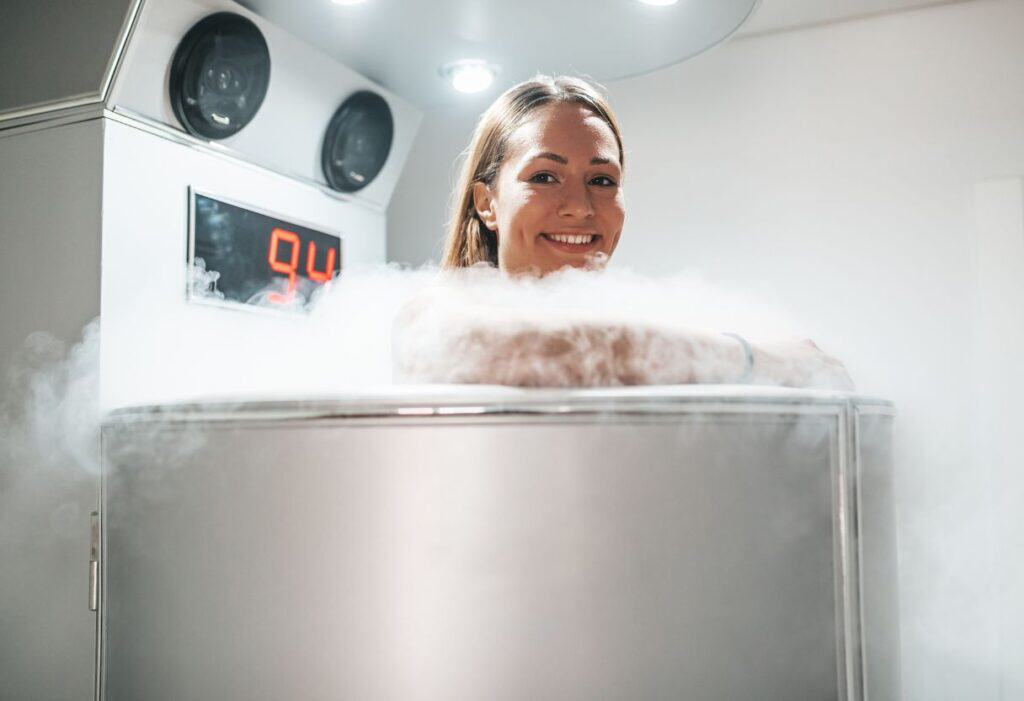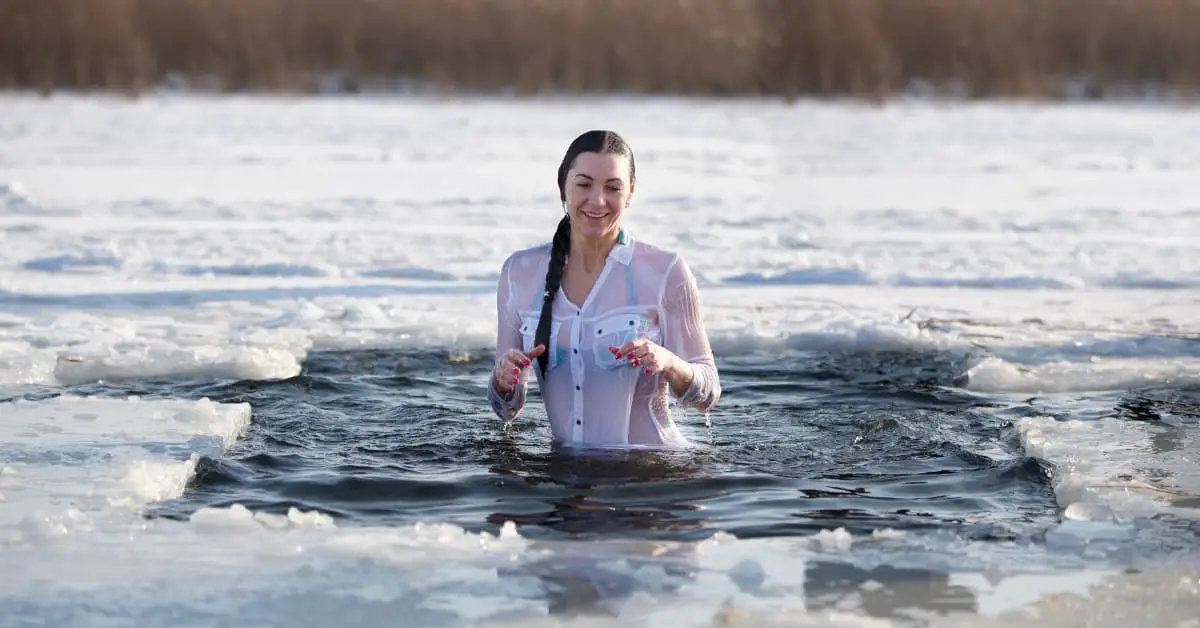What Are The Health Benefits Of Ice Baths? Exploring The Facts
Immersing yourself in an ice bath might seem like a practice reserved for athletes, but recent interest has shown that this chilly endeavor offers benefits that could be valuable to many. Imagine after a long, enduring run, lifting weights, or any intense workout how your muscles ache; you can almost feel the inflammation like fire within your fibers. This is where cold water immersion, or ice baths, steps in as a refreshing solution. By submerging your tired limbs in ice-filled water, you’re not only initiating a transformative experience for your body but also embarking on a journey that could lead to multiple health advantages.

The concept of using cold to soothe discomfort has roots that span back to ancient civilizations, yet it’s only in recent times that the health benefits of ice baths have gained scientific interest. As you ease into the frigid water, your body instinctively reacts: blood vessels constrict, reducing swelling and tissue breakdown. Subsequently, once you step out, the underlying tissues warm up, causing a return of faster blood flow which helps return the byproducts of cellular breakdown to the bloodstream for processing. This exchange is thought to help in alleviating muscle soreness and improving recovery.
Moreover, apart from the physiological effects, there are psychological responses at play too. Some studies have shown that cold water immersion can trigger an increase in norepinephrine, a hormone and neurotransmitter that can elevate your mood and energy levels. While the scientific community continues to study and debate the full spectrum of benefits, these initial findings suggest a compelling case for the inclusion of ice baths in your recovery regimen. It’s a method that supports the idea that sometimes, to find warmth and comfort, you might just have to embrace the cold.
Historical Background of Ice Bathing

The origins of ice baths—a form of cryotherapy—are steeped in antiquity. Imagine stepping back into Ancient Greece, where the healing powers of cold water were already recognized. Remedies involving various temperatures, including the brisk embrace of an ice bath, were not uncommon. Indeed, the Greeks believed in thermalism: the therapeutic use of water distinguished by its temperature. Moreover, the practice was a fundamental part of Roman culture as well, where bathhouses featured frigidaria, cold rooms for a chilling dip post-steam or sauna.
Transition to the Wim Hof Method, and you encounter a modern blend of breathing, meditation, and deliberate cold exposure. Wim Hof, also known as ‘The Iceman’, has popularized the method that includes regular ice baths as a means to bolster resilience against the cold, aiming to improve various aspects of health.
| Entity | Relevance to Ice Bathing |
|---|---|
| Ice Baths | Central to thermal therapy, used since ancient times |
| Therapy | Recognized for health benefits including reducing inflammation |
| Cold Therapy | Ancient practice embraced by modern wellness trends |
| Cryotherapy | An evolution of ice baths involving extreme cold exposure |
| Wim Hof Method | Incorporates ice baths in its health regimen |
You might be intrigued to learn that cold therapy extends far beyond a simple plunge. In fact, modern athletes routinely incorporate ice baths into their recovery routines, suggesting reduced muscle soreness and inflammation. A study found that post-exercise ice baths could reduce muscle soreness by about 20%.
To illustrate, the ancient Greeks and Romans were perhaps the pioneers in utilizing cold therapy. While the Wim Hof Method serves as a contemporary testament to these enduring practices. You may not have known, but even the legendary Finnish “avanto” swimming, involving breaks in ice-covered waters, shares a connection with these historically well-rooted traditions.
Understanding Ice Baths
Imagine finishing an intense workout and stepping into a tub of ice-cold water. In that moment, your body undergoes a series of reactions that provide a range of benefits—from soothing sore muscles to improving circulation.
Defining Ice Baths and Cold Water Immersion
An ice bath, also known as cold water immersion, involves submerging your body, usually up to the waist or neck, in icy water. The temperature typically ranges between 50 to 59 degrees Fahrenheit. This practice is thought to help accelerate the recovery of muscles after strenuous physical activity by diminishing muscle soreness.
Mechanism of Action in the Body
When you immerse yourself in an ice bath, your blood vessels constrict, reducing blood flow to your muscles. This vasoconstriction also aids in reducing muscle inflammation and body temperature. As you exit the ice bath, the blood vessels dilate, and blood flow increases, which may help in flushing out metabolic waste post-exercise.
Mechanism of Action
| Process | Effect |
|---|---|
| Vasoconstriction | Reduces inflammation and muscle soreness |
| Reduction in Skin Temperature | Can provide a numbing effect for pain relief |
| Increased Blood Flow (after the bath) | Enhances circulation and may help with healing |
By engaging in this process, you’re also prompting your heart rate to slow down, which may induce a calming effect, akin to the relaxation one might experience after deep-breathing exercises.
It’s essential to approach ice baths with caution, as overly cold temperatures or prolonged immersion can carry risks. Those with cardiovascular conditions should seek medical advice before trying an ice bath.
For more detailed guidance, including how to safely take an ice bath at home, you may refer to resources like Healthline and Michael Kummer’s Blog for recommendations and personal experiences.
Physiological Benefits of Ice Baths
You may have imagined yourself as a Viking, brazen and daring, plunging into the icy ocean. Now, science has validated what these ancient warriors instinctively understood: ice baths harbor tangible health advantages. Embarking on this chilly journey can revolutionize your recovery process.
Inflammation and Swelling Reduction
When you submerge in an ice bath, vasoconstriction occurs — your blood vessels narrow, curtailing blood flow to muscle tissue and reducing inflammation and swelling. This can alleviate muscle soreness after strenuous workouts. According to research, cold therapy may surpass other methods like compression in reducing post-exercise inflammation. Decrease in inflammation is a key highlight many athletes rely on.
Enhanced Muscle Recovery Process
Subsequent to vasoconstriction, once you warm up, there is a rapid dilation of blood vessels, promoting recovery. This alternating pattern between constriction and dilation can help flush out metabolic waste from your muscles. Moreover, ice baths may activate a cold shock response, potentially leading to the release of stress-hormones that can play a role in recovery facilitation. Athletes favor ice baths for this very reason, as they support quicker recovery of muscular function after intense physical exertion.
Improved Circulatory Function
Regular cold exposure through ice baths can train your blood vessels to respond more effectively to changes in temperature and blood pressure. This could improve your circulatory function and overall cardiovascular health. Additionally, exposure to cold can stimulate the vagus nerve, which may aid in reducing heart rate and promoting a state of calmness in your nervous system, further highlighting the importance of improved circulatory function.
While the spine-tingling sensation of icy water may not appeal to everyone, the daring souls who embrace the freeze could see ongoing benefits in their physical well-being.
Ice Baths in Sports Medicine
Imagine you’re a high-performance athlete seeking to enhance your recovery and boost your training outcomes. Sports medicine has honed in on ice baths as a valuable tool within this realm. Let’s explore how they’re being applied to bolster athletic performance and support rigorous training regimens.
Application Among Athletes for Performance
Athletes engage in physical activities that often lead to muscle soreness and fatigue. Here, ice baths come into play, aiming to reduce inflammation and speed up recovery. As you immerse yourself in the frigid water, the cold temperature causes your blood vessels to constrict, helping to flush out metabolic waste like lactic acid. Notably, athletes report decreased muscle soreness after ice baths, which is crucial for those involved in continuous training and competitions.
Research suggests that the reduced inflammation and lowered tissue temperature can lead to lessened pain and may help to preserve muscle strength. However, findings about the exact impact on performance vary, and Michael Kummer’s analysis on increased norepinephrine suggests that the benefits extend beyond just the physical to the psychological, potentially enhancing focus and alertness.
Strategies for Training and Active Recovery
Incorporating ice baths into an athlete’s routine is a balancing act. Your goal during training is to induce adaptations in muscle strength and endurance, which requires a careful calibration of stress and recovery. Professionals in sports medicine emphasize the importance of timing—the active recovery phase—suggesting that ice baths are most effective immediately post-exercise, as highlighted by the Cleveland Clinic.
Strength training athletes might stagger ice baths to avoid blunting the hormonal response that contributes to muscle development. Instead, they may use them specifically after high-intensity sessions or competitions for immediate recovery benefits. It’s a strategy that is especially popular among professional athletes, who must sustain high levels of physical activity over extended periods.
| Recovery Strategy | Recommendation | Consideration |
|---|---|---|
| Ice Bath Post-Training | Ideal for immediate recovery; submerge for 10–15 minutes | Be mindful of water temperature and duration to avoid overexposure |
| Active Recovery Sessions | Pair with low-intensity exercise | Aids in maintaining flexibility and promoting blood flow |
In conclusion, while ice baths are integrated into sports medicine with promising anecdotal evidence from athletes, it’s your individual response that will determine their effectiveness in your training and recovery protocols.
Psychological Effects and Mental Health
Imagine you’re stepping into a tub of ice-cold water; the initial shock races through your body, immediately prompting a cascade of changes in your mood and mental alertness. This is a snapshot of the potent psychological effects that ice baths can have on your mental health.
Stress Response and Mood Enhancement
When you immerse yourself in an ice bath, your body triggers a natural stress response. Short-term exposure to cold water can lead to mood enhancement due to the release of endorphins, the body’s natural painkillers and mood elevators. A study shared by The New York Times suggests that cold water plunges may be effective in reducing anxiety and depression symptoms. Furthermore, your ability to handle stress improves, promoting resilience as you regularly expose yourself to the elements of cold therapy.
Focus and Alertness
The jolt of an ice bath can also have a remarkable impact on your focus and alertness. The cold induces a heightened state of mental clarity, pushing aside the fog that often comes with fatigue or overwhelm. This instant sharpening of your senses could be a reason why ice baths have been adopted by many seeking a mental refresh. According to experts from Plunge, consistent ice bath routines can alleviate symptoms of depression and anxiety while also making improvements in mental health and stress resilience.
| Recommendations & Highlights | Details |
|---|---|
| Regular Practice | Engaging in ice baths 2-4 times a week helps build mental resilience and enhances mood. |
| Safe Exposure Duration | Limit each bath to 1-5 minutes at a time to reap psychological benefits without risking health. |
| Mental Health Benefits Observed | Participants report reductions in anxiety and improved mood after cold water immersion. |
Adopting such practices into your routine may help you manage mental stress and enhance your overall mental wellness. Always consider safety first, and if you’re experiencing any mental health struggles, seek guidance from a professional.
Practical Considerations and Methods
When embarking on the quest to reap the potential benefits of ice baths, like easing muscle soreness and aiding recovery, certain practices can optimize your experience. Think of this as your roadmap, where precision in water temperature and timing and the setup at home are your key coordinates.
Suitable Water Temperature and Duration
Temperature: The best practice for an ice bath is maintaining water temperatures between 50°F and 59°F (10°C and 15°C). This range is often cited as optimal for reducing inflammation and aiding recovery. Using a thermometer to monitor the water temperature is crucial to ensure safety and effectiveness.
Duration: Typically, an ice bath should last between 10 to 15 minutes. It’s important to use a timer to avoid overexposure, which can lead to hypothermia. Remember, shorter durations can still be beneficial; even a 5-minute dip has been shown to help.
| Session Length | Target Temp (°F) | Expected Benefit |
|---|---|---|
| 5-10 minutes | 50°F – 59°F | Muscle Soreness |
| 10-15 minutes | 50°F – 59°F | Recovery & Healing |
DIY Ice Bath Setup at Home
Choosing the Vessel: Your standard bathtub can be transformed into an ice bath with the right preparation. If you lack a tub, consider various water therapy tubs available in the market, which are specifically designed for cold immersions.
Creating the Ice Bath:
- Fill the tub with cold tap water, leaving enough space for the ice.
- Add ice until you reach the desired water temperature. This often requires a substantial amount of ice, so be prepared.
- Enter the bath slowly and ensure you have a towel within reach for when you exit.
| Step | Items Needed | Tips |
|---|---|---|
| Fill the bathtub | Bathtub, Tap water | Begin with cold tap water |
| Adjust temperature | Ice, Thermometer | Use a thermometer to monitor |
| Submerge and relax | Timer, Towel | Keep a towel nearby for comfort and warmth upon exiting |
Interestingly, studies on ice bath protocols reveal that a sample size with diverse participants indicates varied individual responses, suggesting a tailored approach is advisable. For instance, a research piece from the British Journal of Sports Medicine found that individualized cold water immersion protocols offer different benefits depending on the athlete’s body composition and training status.
Potential Risks and Precautions

While you might be inclined to try ice baths for their health benefits, it’s critical that you’re aware of the potential risks and take necessary precautions. Ice baths can be a double-edged sword, so understanding how to navigate these waters safely is paramount.
Recognizing and Avoiding Hypothermia
Hypothermia occurs when your body loses heat faster than it can produce it, causing a dangerously low body temperature. When taking an ice bath, it’s crucial to monitor the duration and temperature of exposure. Normally, a body temperature below 95°F (35°C) indicates hypothermia, and symptoms may include shivering, drowsiness, and shallow breathing. To avoid hypothermia, limit ice bath sessions to 10-15 minutes and gradually adapt to the cold exposure with proper breathing exercises to maintain a steady respiratory rate.
Contraindications and Healthcare Provider Advice
Before you consider an ice bath, consulting with a healthcare provider is non-negotiable, especially if you have health-related issues such as heart disease, high blood pressure, or diabetes. These conditions can escalate the risks associated with cold exposure. For instance, sudden temperature changes can strain the heart, potentially leading to adverse reactions in individuals with cardiovascular concerns. Moreover, those with nerve damage may not sense the cold as acutely, increasing their risk of frostbite or hypothermia.
| Consideration | Recommendation |
|---|---|
| Duration of Ice Bath | Up to 15 minutes |
| Symptoms of Hypothermia to Monitor | Shivering, drowsiness |
| Pre-existing Health Conditions | Consult healthcare provider |
Remember, if you have any open wounds, an ice bath may not be suitable due to the risk of infection. Your healthcare provider can offer tailored advice that aligns with your health profile. Always prioritize your well-being and act on professional guidance to mitigate risks.
Interesting Statistic: Despite the popularity of ice baths, a study reported that only 1 in 5 people correctly follow recommended guidelines to prevent risks associated with cold therapies. This underscores the necessity of informed practices and healthcare consultation (Healthline).
Comparisons to Other Recovery Methods

Imagine pushing through a grueling workout, your muscles are throbbing, and you’re now faced with the crucial decision of how to recover. On one hand, you have the stark chill of an ice bath, renowned for its potential to soothe your shouting muscles. On the other, the gentler touch of a cold shower or the advanced technology of cryotherapy chambers beckon. Let’s dive into how these methods stack up against each other.
Cold Showers vs. Ice Baths
Cold Showers:
- Pros: Convenient and easy to incorporate into daily routine.
- Cons: Less intense, may not deliver the same level of benefits as ice baths.
Ice Baths:
- Pros: May significantly enhance muscle recovery and reduce soreness.
- Cons: Can be uncomfortably cold, requiring more effort and preparation.
Taking a cold shower is a brisk, no-fuss method that can certainly perk you up and provide mild muscle soreness relief. Conversely, submerging in an ice bath might just be the calming influence you need to deal with the inflammation and aches.
Cryotherapy Chambers and Alternatives
Cryotherapy:
- Utilizes extremely cold air in controlled chambers.
- Can be costly and less accessible.
Alternatives:
- Meditation for recovery: Incorporates breathwork and mindfulness.
- Cold therapy in nature: Plunges in cold lakes or streams.
Cryotherapy chambers are a modern marvel, where you stand in a booth that surrounds you with icy air, promising to kick-start your body’s recovery processes. However, these chambers are not as readily available as a shower or bathtub, and can make a dent in your wallet.
For a touch of stillness, you might also explore meditation as an aid in recovery. Or perhaps the invigorating embrace of Mother Nature’s cold therapy could offer the refreshment you seek. When you step out of the recovery zone, remember that the key is to listen to your body and choose the method that feels right for you.
Summary of Research and Evidence
Years ago, an athlete soaked in a tub of ice, claiming relief for his worn muscles. Today, that anecdotal story aligns intriguingly with scientific findings on ice baths and muscle recovery.
Examining the Scientific Literature
Ice baths, known scientifically as cold water immersion (CWI), are a form of cryotherapy that has attracted attention for its potential benefits in reducing inflammation, relieving sore muscles, and possibly aiding in muscle recovery. Research suggests that submerging in cold water post-exercise can indeed help lessen muscle pain, which could be attributed to a reduction in muscle blood flow, thus limiting inflammatory signals.
Studies indicate that the exposure to cold temperatures through ice baths may lead to a physiological phenomenon known as hormesis. This adaptive response to mild stress has been suggested to enhance various systems within the body, although the exact mechanisms and long-term effects are not yet fully understood.
While the potential pros of ice baths can sound compelling, the debate on negative impacts on muscle mass accrual lingers, with some researchers cautioning it might inhibit the muscle growth process. However, evidence remains mixed and further investigation is needed.
In terms of metabolic biomarkers, exposure to cold has demonstrated effects on creatine kinase, an enzyme found in the muscle, where its activity can be influenced by ice baths. Yet, here too, evidence is inconclusive on whether this is beneficial or could pose concerns for muscle integrity.
Interesting stats often not discussed show that despite cold water’s ability to reduce perceived muscle soreness, its effect on objective markers like strength and power recovery remains uncertain.
The benefits of ice baths extend beyond mere folk wisdom into areas demanding critical scientific inquiry. This summary highlights the potential and the pitfalls, with a prudent takeaway for enthusiasts and professionals to approach this recovery ritual with an informed perspective.

